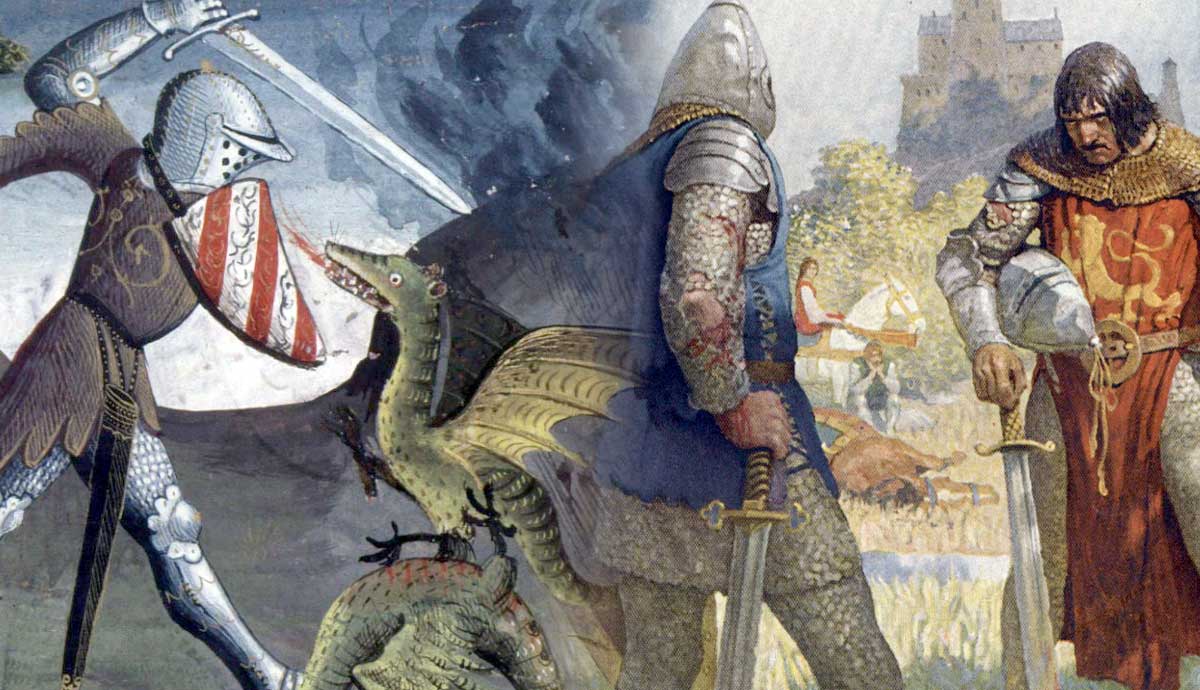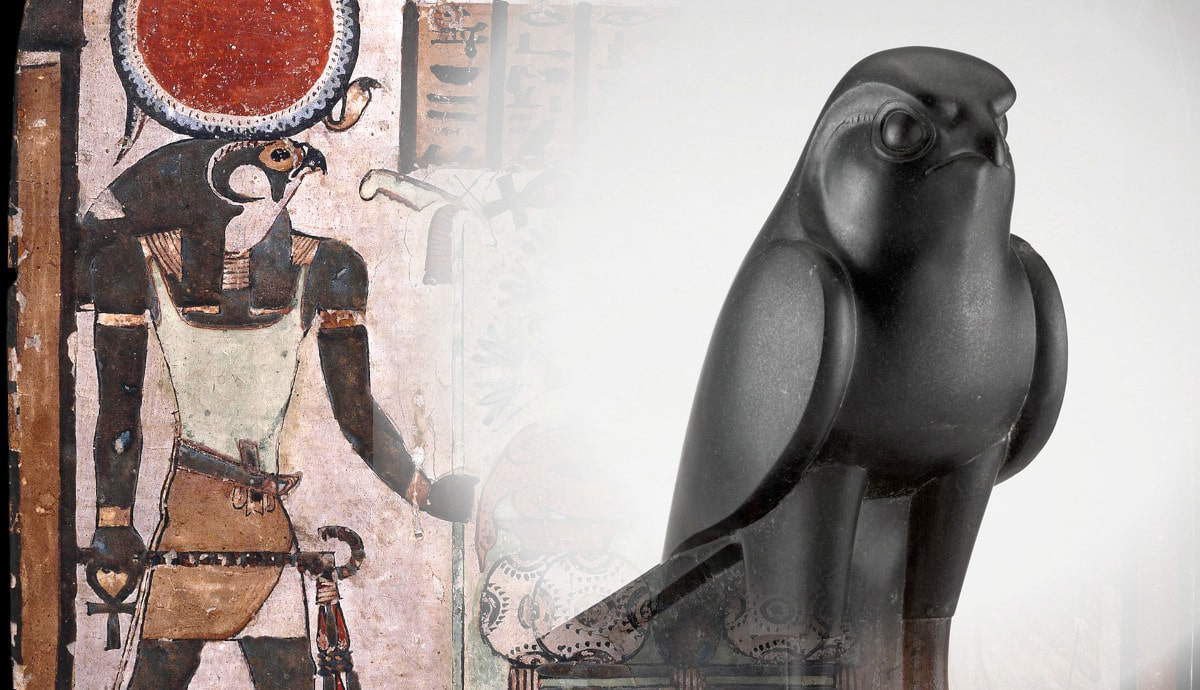
Typhon, or Typhoeus as he was also called, was a monstrous, serpentine creature with a hundred heads that could shoot fire from his eyes. He spoke with a myriad of sounds and voices, sometimes bellowing like a bull, barking like a dog, or roaring like a lion. He was the greatest and final challenger against Zeus for the throne of Olympus. His eventual defeat culminated in Zeus’ crowning and the dividing of powers among the Olympians.
Who Were the Parents of Typhon?

The earliest mention of Typhon comes from Hesiod’s Theogony, written in the 8th century BCE. In it, the poet writes that Typhon is the child of Gaia and Tartarus. He is the youngest son of Gaia, born after Zeus’ defeat and imprisonment of the Titans, or the Giants, according to 1st century CE author Apollodorus. While it is a common misconception that Gaia was angry with Zeus over his treatment of the previous generation of gods and, therefore, gave birth to Typhon specifically so he could seek vengeance, there is no textual evidence to support this.
Her birth of Typhon likely follows the pattern laid out by the succession myth, which foretells Ouranos being overthrown by his son Cronos, and Cronos by his son Zeus. Zeus is also told that he will have a child by Metis who will overthrow him and become the lord of heaven. To prevent this, he swallows Metis, and then their child, the goddess Athena, is born from Zeus’s head. Metis then lives inside Zeus, unable to give birth to a male child, breaking the cycle. But it means that Zeus’ triumph over Typhon can be definitive and cements his rule as one that will be eternal, unlike his predecessors.
Another version of Typhon’s origin comes from the Homeric Hymn to Delian Apollo. In the poem, it isn’t Gaia who births the monster but Hera. She gives birth to Typhon through parthenogenesis, virgin birth, because she is angry at Zeus for giving birth to Athena on his own. She struck the ground with the flat of her hand and prayed to Gaia, Ouranos, and all the Titans sealed away in Tartarus that she might bear a son stronger than Zeus. Gaia heard her prayer and fulfilled it, and for a year, Hera did not share Zeus’ bed. When the year was done, Hera gave birth to Typhon. She then brought Typhon to Delphi, where he was raised by the she-dragon Echidna.
In both versions, Typhon is born with the express purpose of challenging Zeus, and he proves to be Zeus’ greatest challenger.
How Typhon Caused the Flight of the Gods

When Typhon attacked Olympus, the force of his assault filled the gods with a terror they had never known before. Luckily, they received a warning from Pan. They all fled to Egypt and the banks of the Nile River, where they hid disguised as animals. This is an aetiological myth that serves to explain why the Egyptians practiced animal worship. Apollo became a hawk, like the god Horus; Hermes became an Ibis, like the god Thoth; Artemis became a cat, like Bastet; Hephaestus became an ox, like Ptah; and Dionysus became a goat, like Osiris.
To the Egyptians, Typhon was equated with their god Set, the god of destruction. The 5th-century historian Herodotus reported that the Egyptians had a myth where Typhon was once the supreme king of the cosmos but was deposed by Apollo, Egyptian Horus, who became the last divine king of Egypt. While this is not part of Greek tradition, it is noteworthy that the Greeks found no conflict between their own cosmogony and that of their neighbors and were easily able to incorporate aspects or even entire stories into their own tradition.
How Typhon Challenged Zeus

The main purpose of Typhon’s existence was to be a challenger to Zeus for supremacy of the cosmos. This plays into the larger theme of the succession myth and also parallels the succession myths of the Near Eastern Hurro-Hittite culture, where the Greek version was thought to have originated. Hesiod’s version is brief, emphasizing the cosmic implications of Typhon’s potential victory, while later authors provide more detail.
In Apollodorus’ Library of Greek Mythology, Typhon stormed Olympus, throwing red hot rocks at the heavens. They were warned of the danger by Pan, and when the gods saw Typhon approaching, they all fled to Egypt and hid by transforming into animals. Only Zeus, and sometimes Athena, remained to fend off the monster, hurling down lightning bolts at him. As Typhon drew nearer, Zeus attempted to attack him with an adamantine sickle similar to the one used to castrate Ouranos, but Typhon fled to Mount Casium.

Zeus followed, hoping to finish the job, but Typhon captured him in his serpentine coils. The monster took the sickle and cut out the sinews from Zeus’ hands and feet, immobilizing him. He then took Zeus to Cilicia and left him in the Corycian cave, hiding the sinews and leaving a dragon to guard him. But Hermes stole back the sinews and implanted them back into Zeus. Regaining his strength, the king of the gods pursued Typhon, hurling lightning at him as he fled to Mount Nysa. There, Typhon was said to have been deceived by the Fates into eating the fruits of Dionysus (i.e. wine grapes). They told him that they would give him strength, but what they actually did was unclear.
Typhon fought Zeus desperately, throwing entire mountains at him, but the god blasted them apart with his thunderbolt. As Typhon fled to Sicily, Zeus cornered him and dropped Mount Etna on top of him, imprisoning him beneath.
Imprisonment of Typhon

Tradition holds that Typhon was imprisoned beneath Mount Etna in Sicily, guarded by Hephaestus. From his prison below, Typhon was said to send up flames out of the mountain, which Hephaestus uses when smithing his many divine armaments.
Another account further connects Typhon with Egypt, stating that he was buried beneath the Serbonian Marshes, an area east of the Nile Delta between Mt. Casius, the Isthmus of Suez, and the Mediterranean Sea. This account also links Typhon with Set.
Typhon as Father of Monsters

Typhon was said to have fathered many of the strange and dangerous creatures that inhabited Greek mythology. His monstrous brood terrorized the mortal world, most of which were eventually dispatched by the race of heroes. Some, like the three-headed hound Cerberus, who guards the gates of the underworld, were incorporated into Zeus’ cosmic order.
In Hesiod, the author names Typhoeus and Typhaon (both names for Typhon) as two distinct entities, though later authors often conflate the two. Typhoeus was the last son of Gaia, who tried to overthrow Zeus and was imprisoned under Mount Etna. Typhaon was the consort of Echidna, a half-maiden, half-serpent nymph, and fathered by her a race of monsters. These monsters posed a similar threat to the ordering of the world as Typhon himself since they represent the same aspects of chaos. Once the last of Typhon’s brood, at least those not given a proper place in the cosmos by Zeus, were killed, the world took on its modern shape.
Typhon sired Orthos, the Lernean Hydra, the Nemean Lion, the eagle that flew to the Caucasus mountains and ate Prometheus’ liver every day, and the dragon that guarded the golden apples of the Hesperides. All were killed by Heracles during his 12 labors. Typhon was also the father of the Chimera, which was killed by Bellerophon, and the dragon which guarded the golden fleece in Colchis, which was killed by Jason.
The Ordering of Sound

Hesiod’s Theogony serves to explain the ordering of the world and how things came to be as they are, culminating in Zeus’ kingship. With each new succession of gods, the world takes a more familiar, delineated shape as gods are born and given names and powers. The episode with Typhon explains the ordering of sound and methods of communication in the cosmos, with emphasis on mortal and divine voices. Hesiod makes the threat of Typhon less of a physical threat than a sonic one. The poet spends many lines describing the chaotic and terrible sounds made by Typhon.
“Astounding voices came from those weird heads,
all kinds of voices: sometimes speech which gods
would understand, and sometimes bellowings,
as of a bull let loose, enraged, and proud,
sometimes that of a ruthless lion; then,
sometimes the yelp of puppies, marvelous
to hear; and then sometimes he hissed,
and the tall mountains echoed underneath.” (830-835)
With Typhon’s chaotic and boundless voices, his challenge to Zeus represents an ordering of the cosmos where sounds are not delineated, and therefore, there can be no communication between the gods and mortals. When Zeus battles the monster, the action again focuses on sounds as Zeus overwhelms Typhon with his lightning.
“[…]he thundered mightily
and fiercely, and the earth rang terribly,
broad heaven above, the sea, and Ocean’s streams
and Tartarus resounded.” (839-841)

The death of Typhon is described as a necessary precursor for the birth of the Muses, who imparted ordered song and knowledge to Hesiod so that he may then transmit it to others. In the poem, several words are used to describe the voices of Typhon, all of which are found elsewhere in epic poetry, used to describe the utterances of gods or the sounds of battle. The glaring omission is the word αυδε, a word only used in epic poetry when describing communication between gods and mortals. In the Theogony, this is the word used to relate the utterances of the Muses to Hesiod. Only when they have converted their divine voice into one that can be understood by mortals is Hesiod able to understand them.
Αυδε is the singular voice not possessed by Typhon, but it seems that his many voices interfere with αυδε and, therefore, block the creation of the Muses and communication between the divine and mortal. He, therefore, poses a threat to the hierarchy Zeus sought to establish. Zeus’ victory over Typhon enabled the birth of the Muses and clear communication between gods and mortals.
References
Clay, J. S. (1993) The Generation of Monsters in Hesiod, Classical Philology, 88(2), 105–116
Goslin, O. (2010) “Hesiod’s Typhonomachy and the Ordering of Sound,” Transactions of the American Philological Association (1974-), 140(2), 351–373
Griffiths, J. G. (1960) “The Flight of the Gods Before Typhon: An Unrecognized Myth,” Hermes, 88(3), 374–376
Hesiod, (8th century BCE) Theogony and Works and Days (D. Wender, trans), Penguin Group, 1973










